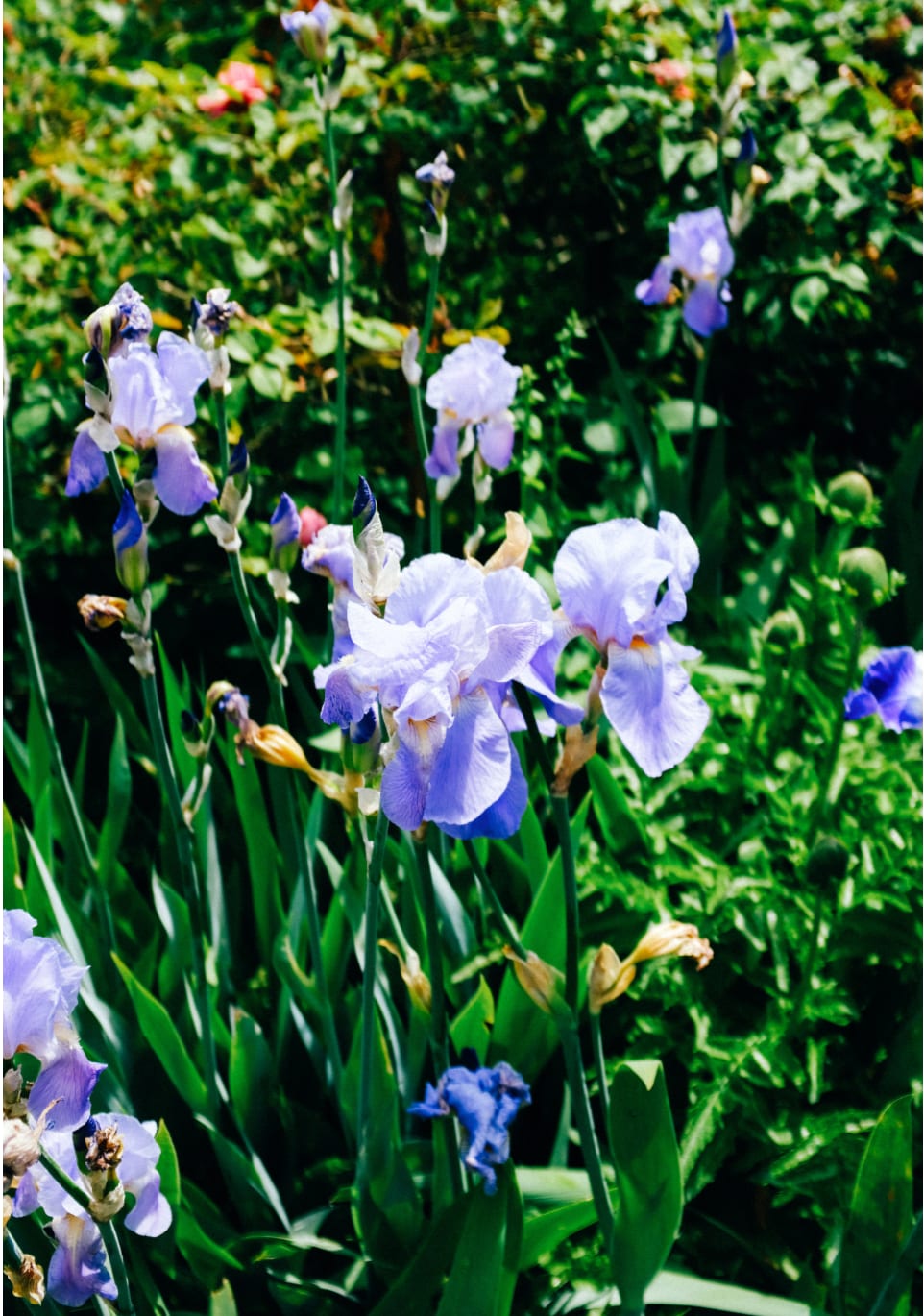One of my earliest memories is walking in a wooded area behind my house and stumbling across a bearded iris in full bloom. My first reaction was stunned awe and delight at its beauty. My second was to jank the whole plant from the ground and drag it inside the kitchen to share my good fortune with my mother. Surprisingly, at least to my four-year-old self, she didn’t beam with joy, but shaking her head and sighing, mumbled something that sounded like “…should have just gotten a dog.” My love of irises was born that day, as was my ongoing confusion over “boundaries,” this new word my mother kept repeating.
Irises are workhorses in the garden, come in a variety of shapes and sizes, tolerate a wide range of conditions, but never seem to get the love they deserve. They are the saltine crackers of the yard, occasionally appreciated for its utilitarian offerings, but only chosen when other options have been exhausted. If you are team saltine, I’d like to share some Iris info that may change your mind.
Let’s start with a Victorian favorite, the Bearded Iris. The Victorians were crazy for exotic plants, and the upper crust of British society would go to great lengths and expense to retrieve plants from all over the world, and then bring them back to the UK to grow at home. They particularly loved the prima donnas that could only live in a certain type of soil, at a certain temperature, with an exact requirement for humidity, light, and soil pH. The harder the plant was to keep alive, the greater the bragging rights. The Bearded Iris started as a favorite, as the flowers resembled the exotic orchids that were in vogue. Over time a problem developed: you couldn’t kill the damn things. Where’s the fun in a plant that you can just stick in the ground and it will happily bloom and multiply? The curse of uncomplicated beauty haunts the iris to this day.
The Bearded Iris is not without a little complication. They grow from rhizomes, and over time they spread and form a large clump. In a few years, they can crowd each other out, resulting in fewer blooms and more leaves, one reason a well-established patch becomes less eye-catching over time. For optimum blooms, divide the plants every three to five years in late June or July. Simply dig them up, separate the rhizomes, and replant them in groups of three about two feet apart from each other. Cut the leaves back so they are in a fan shape about four to six inches long. This helps the plant conserve water and prevents wind damage to the new roots.
The Siberian Iris is my favorite for several reasons, but the main one is that for something so delicate looking, it’s pretty much indestructible. I’ve grown them in sun, shade, clay, and even stuck one in a fish pond. Every single time they’ve thrived. The leaves are much shorter and thinner than the bearded iris, and most varieties top out at about two feet. They also form clumps as they grow, but do not need to be thinned out unless you’d like to start a new bed. Seed pods develop in the fall and open in the spring, and I’ve had great success starting new beds by simply sprinkling the seeds in a new area.
Another reason to love irises is iris unguicularis or the Algerian Iris. This lovely iconoclast starts blooming in the late fall and keeps going through the spring. Most gardens are pretty bleak in the winter, so having blooms in January and February is a treat, and they even have a beautiful fragrance. It’s an evergreen perennial, usually topping out around 12-18 inches and growing in clumps two feet wide. While hearty, unlike other varieties of Iris, they do not like to be disturbed, so give them a little extra care when you divide them in midsummer or early fall. My favorite variety is Mary Barnard, which is very hardy and blooms like crazy. Alba has beautiful showy white flowers, and you have to love Walter Butt, because people, everybody loves Walter’s Butt. And the showy orchid-like flowers aren’t bad either.
If you have a shade garden, I’ve had great luck with iris foetidissima, also known as the stinking iris, at least by its grade school classmates. This iris does well in shade, has lavender flowers, grows to 12-18 inches, and has striking seed pods that contain bright orange seeds. Another shade-loving iris is the Dwarf Crested Iris. It’s striking because the leaves mature at six inches, and it’s more like a ground cover with iris flowers. It spreads easily, but it’s not invasive, so it’s a great pick for a rock garden.
So, if you’re trying to get a little more planting in before the heat hits, give one of these gems a try. Iris my case.


